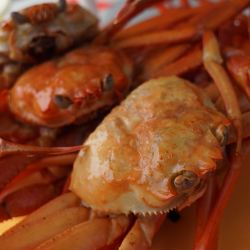Science is not easy. It isn’t easy to do or to write about. But some do it better than others in both instances. Consider this example concerning the massive decline in the Pacific Snow Crab population.
NOAA estimates the Pacific Snow Crabs population has dropped from 11.7 billion in 2018 to just under 1 billion in 2021 – the 2021 figure was confirmed by the readings in 2022. So, crab fishing is closed for the foreseeable future. That’s a $200 million industry totally shut down.
Back in October, Slate published an article about the event. The writer interviewed one person, Dr. Mike Litzow, the shellfish assessment program manager at the Alaska Fisheries Science Center for the National Oceanic and Atmospheric Administration. Dr. Litzow and the writer identified several possible causes, all entirely related to climate change. They note that climate change has caused the Bering Sea's temperatures to rise to a point too warm for crabs to thrive and survive.
Subsequently, Nautilus published an article on the same event. While the writer of this article did invoke climate change, he identified other factors that may play pivotal roles. One of his experts, Braxton Dew, a marine biologist with NOAA, pointed out to NOAA that the agency was probably overcounting the number of crabs. It turns out these crabs like to cluster in piles of 800 to 900. Dr. Dew’s wife, mathematician Roberta Austring, noted that NOAA's methods for estimating sea-life populations are less accurate for crab populations than for fish. The samples NOAA draw each year to make their estimates are extrapolated 40,000 fold, leaving plenty of room for error.
Based on interviews with dozens of experts, including scientists, government employees, and fishermen, the writer raised the concern that overfishing was partly responsible for the dramatic drop. NOAA’s North Pacific Fisheries Management Council increased the annual catch limit from 19 million to 45 million pounds. Quoting a marine biologist with Greenpeace,
“You would think that fishery managers would want to set more precautionary catch limits to account for climate uncertainty. They don’t typically do that, but they definitely blame climate change if things go wrong.”
In reading the two articles, I observed two very different interpretations of the “collapse” of the Pacific Snow Crab population. The Slate article merely served as a mouthpiece for NOAA and its blame everything on climate change policy. Nautilus noted climate change but suggested other factors, including inaccuracies of measurement and the role of NOAA in using these measures to set fishing limits, are involved.
The experts here at the American Council on Science and Health are very good science writers. When they look at an issue, they look at it from all sides. That gives us credibility. Last year through our work with media outlets – print, online, and broadcast – ACSH reached more than 1.2 billion people; I think readers are pretty confident in the writings of our experts.

